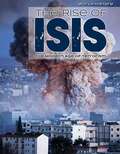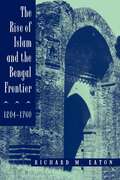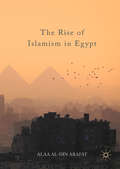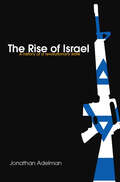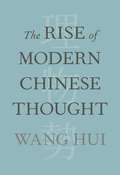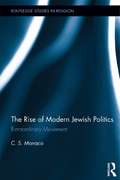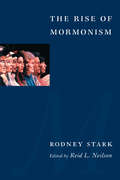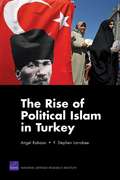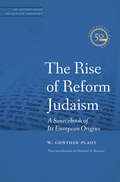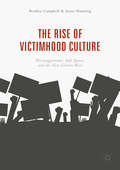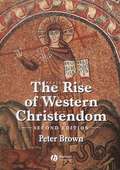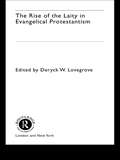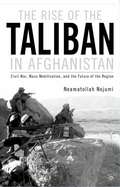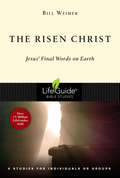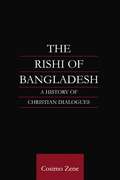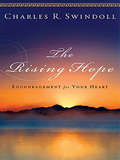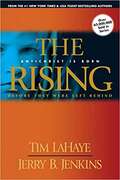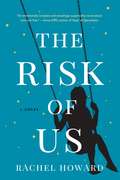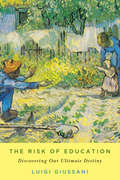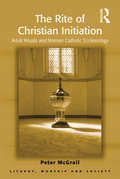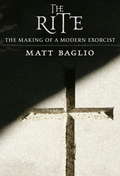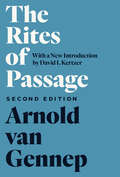- Table View
- List View
The Rise of ISIS
by Caroline KennonISIS is a significant threat to modern society. It has caused the deaths of thousands and the rise of anti-Muslim sentiment around the world, despite the fact that prominent Muslim leaders have denounced the group's actions. <p><p> Understanding ISIS is vital to defeating it. Readers learn about the creation of this terrorist group, its rise to power, and what is being done by nations around the world to stop its members from taking more lives. Full-color photographs and a timeline of key events contribute to a comprehensive overview of this chapter in the story of modern terrorism.
The Rise of Islam and the Bengal Frontier, 1204-1760 (Comparative Studies on Muslim Societies #17)
by Richard M. EatonIn all of the South Asian subcontinent, Bengal was the region most receptive to the Islamic faith. This area today is home to the world's second-largest Muslim ethnic population. How and why did such a large Muslim population emerge there? And how does such a religious conversion take place? Richard Eaton uses archaeological evidence, monuments, narrative histories, poetry, and Mughal administrative documents to trace the long historical encounter between Islamic and Indic civilizations.Moving from the year 1204, when Persianized Turks from North India annexed the former Hindu states of the lower Ganges delta, to 1760, when the British East India Company rose to political dominance there, Eaton explores these moving frontiers, focusing especially on agrarian growth and religious change.
The Rise of Islamism in Egypt
by Alaa Al-Din ArafatThis book provides an overview of the sudden ascendancy of Islamism in post-Mubarak Egypt and a detailed history of the power grab by the Muslim Brotherhood. The author argues that liberals and Copts are minor factions, and that the Islamists, the military and 'couch party' (non- politically affiliated Egyptians) are the true key actors in Egyptian politics. Additionally, it is posited that, ironically, Mubarak's coup-proofing strategy was responsible for the military turning against him. The strained civil-military relations in Egypt are examined, as are the ideological development of the MB, Salafist and jihadist groups, and the power struggle between the Islamists and the military.
The Rise of Israel: A History of a Revolutionary State (Israeli History, Politics and Society #10)
by Jonathan AdelmanThe state of Israel is one of the most controversial countries in the world. Yet, its unique creation and rise to power in 1948 has not been adequately explained either by its friends (mainstream Zionists) nor by its detractors (Arabists and post-Zionists). Using a variety of comparative methodologies; from contrasting the Jewish state to other minorities in the Ottoman Turkish Empire to the rise of the four Tigers in Asia to newly independent countries and revolutionary socialist countries in Europe and Asia, Jonathan Adelman examines how Israel has gained the strength to overcome great obstacles and become a serious regional power in the Middle East by 2007. Themes addressed include: how the creation of Israel is strikingly different from that of most new states, as undetermined by the major structural forces in the world in the twentieth century how voluntarist forces, those of individual choice, will and strategy, played a major role in its creation and success in-depth analysis of the creation of a revolutionary party, government, army and secret police as critical to the success of the socialist revolution (1881–1977) the enormity of the forces aligned against the state; from major international and religious organizations representing billions of people, international reluctance to helping Israel in crisis, and internal Israeli and Jewish issues the tremendous impact of revolutionary (socialist and semi-capitalist nationalist) factors in giving Israel the strength to survive and become a significant regional power over time. Jonathan Adelman provides a fresh perspective to view one of the most controversial states in the world and avoids the highly charged ideological descriptions that often plague such discussions. Understanding the rise of Israel, a central state in the region, helps to explain a great deal about the Middle East today.
The Rise of Modern Chinese Thought (Emersion: Emergent Village Resources For Communities Of Faith Ser.)
by Hui WangThe definitive history of China’s philosophical confrontation with modernity, available for the first time in English.What does it mean for China to be modern, or for modernity to be Chinese? How is the notion of historical rupture—a fundamental distinction between tradition and modernity—compatible or not with the history of Chinese thought?These questions animate The Rise of Modern Chinese Thought, a sprawling intellectual history considered one of the most significant achievements of modern Chinese scholarship, available here in English for the first time. Wang Hui traces the seventh-century origins of three key ideas—“principle” (li), “things” (wu), and “propensity” (shi)—and analyzes their continual evolution up to the beginning of the twentieth century. Confucian scholars grappled with the problem of linking transcendental law to the material world, thought to action—a goal that Wang argues became outdated as China’s socioeconomic conditions were radically transformed during the Song Dynasty. Wang shows how the epistemic shifts of that time period produced a new intellectual framework that has proven both durable and malleable, influencing generations of philosophers and even China’s transformation from empire to nation-state in the early twentieth century. In a new preface, Wang also reflects on responses to his book since its original publication in Chinese.With theoretical rigor and uncommon insight into the roots of contemporary political commitments, Wang delivers a masterpiece of scholarship that is overdue in translation. Through deep readings of key figures and classical texts, The Rise of Modern Chinese Thought provides an account of Chinese philosophy and history that will transform our understanding of the modern not only in China but around the world.
The Rise of Modern Jewish Politics: Extraordinary Movement (Routledge Studies in Religion)
by C.S. MonacoThe path toward modern Jewish politics, a process that required a dramatic reconstruction of Jewish life, may have emerged during a far earlier time frame and in a different geographic and cultural context than has previously been thought. Drawing upon current sociological understanding of social movements, this book places the 1827 organized protest in London as an integral part of a transnational social movement continuum—similar to the abolitionist and women’s rights movements—that waxed and waned throughout the 19th century. From its early origins in London in 1827, to Montefiore’s gallant style of leadership in the Middle East, to the rise of the "Mourning March" and street processions of the early twentieth-century, and then on to the civil disobedience of the 1980s, the movement evolved, shifted its contentious center from England to the United States, and adapted to a dramatically altered post-Holocaust environment. This multifaceted and often fractious campaign was never monolithic by nature and was often rife with internal disputes. It ran the gamut between stirring accomplishments and mobilizations that fell far short of expectations. Any attempt to view the lengthy series of international protests as a steady progression of liberality and advancement would be at odds with a far more ambiguous reality. The Rise of Modern Jewish Politics argues that the numerous protest insurgences strengthened Jewish participation in the public sphere and further defined a public political culture. While the movement certainly evolved through the decades, the core values that first arose in London were retained during the course of several contentious cycles that later surfaced both in Britain and the United States. This book utilizes an innovative interpretive framework to formulate a new paradigm of how Jews entered the modern world. The struggle for Jewish rights remains one of the most enduring social movements in modern history.
The Rise of Mormonism
by Rodney StarkWill Mormonism be the next world faith, one that will rival Catholicism, Islam, and other major religions in terms of numbers and global appeal? This was the question Rodney Stark addressed in his much-discussed and much-debated article, "The Rise of a New World Faith" (1984), one of several essays on Mormonism included in this new collection. Examining the religion's growing appeal, Rodney Stark concluded that Mormons could number 267 million members by 2080. In what would become known as "the Stark argument," Stark suggested that the Mormon Church offered contemporary sociologists and historians of religion an opportunity to observe a rare event: the birth of a new world religion.In the years following that article, Stark has become one of the foremost scholars of Mormonism and the sociology of religion. This new work, the first to collect his influential writings on the Mormon Church, includes previously published essays, revised and rewritten for this volume. His work sheds light on both the growth of Mormonism and on how and why certain religions continue to grow while others fade away. Stark examines the reasons behind the spread of Mormonism, exploring such factors as cultural continuity with the faiths from which it seeks converts, a volunteer missionary force, and birth rates. He explains why a demanding faith like Mormonism has such broad appeal in today's world and considers the importance of social networks in finding new converts. Stark's work also presents groundbreaking perspectives on larger issues in the study of religion, including the nature of revelation and the reasons for religious growth in an age of modernization and secularization.
The Rise of Political Islam in Turkey
by Angel Rabasa F. Stephen LarrabeeTurkey, a Muslim-majority country, is pivotal to Western security interests in the Middle East. Its ruling party, the AKP, has Islamic roots but operates within a framework of strict secular democracy, which has generated controversy over the boundaries between secularism and religion. This monograph describes the politico-religious landscape in Turkey and evaluates how the balance between secular and religious forces has changed over the past decade.
The Rise of Reform Judaism: A Sourcebook of Its European Origins (JPS Anthologies of Jewish Thought)
by Rabbi W. Gunther Plaut Dr Solomon B. Freehof Rabbi Howard A. BermanThis fiftieth anniversary edition of W. Gunther Plaut’s classic volume on the beginnings of the Jewish Reform Movement is updated with a new introduction by Howard A. Berman. The Rise of Reform Judaism covers the first one hundred years of the movement, from the time of the eighteenth-century Jewish Enlightenment leader Moses Mendelssohn to the conclusion of the Augsburg synod in 1871.In these pages the founders who established liberal Judaism speak for themselves through their journals and pamphlets, books and sermons, petitions and resolutions, and public arguments and disputations. Each selection includes Plaut’s brief introduction and sketch of the reformer. Important topics within Judaism are addressed in these writings: philosophy and theology, religious practice, synagogue services, and personal life, as well as controversies on the permissibility of organ music, the introduction of the sermon, the nature of circumcision, the observance of the Sabbath, the rights of women, and the authenticity of the Bible.
The Rise of Victimhood Culture: Microaggressions, Safe Spaces, and the New Culture Wars
by Bradley Campbell Jason ManningThe Rise of Victimhood Culture offers a framework for understanding recent moral conflicts at U.S. universities, which have bled into society at large. These are not the familiar clashes between liberals and conservatives or the religious and the secular: instead, they are clashes between a new moral culture—victimhood culture—and a more traditional culture of dignity. Even as students increasingly demand trigger warnings and “safe spaces,” many young people are quick to police the words and deeds of others, who in turn claim that political correctness has run amok. Interestingly, members of both camps often consider themselves victims of the other. In tracking the rise of victimhood culture, Bradley Campbell and Jason Manning help to decode an often dizzying cultural milieu, from campus riots over conservative speakers and debates around free speech to the election of Donald Trump.
The Rise of Western Christendom: Triumph and Diversity, A.D. 200-1000 (Second Edition)
by Peter BrownThe history of the early Christian community in Europe.
The Rise of the Laity in Evangelical Protestantism
by Deryck W. LovegroveThis comprehensive investigation into the involvement of ordinary Christians in Church activities and in anti-clerical dissent, explores a phenomenon stretching from Britain and Germany to the Americas and beyond. It considers how evangelicalism, as an anti-establishmentarian and profoundly individualistic movement, has allowed the traditionally powerless to become enterprising, vocal, and influential in the religious arena and in other areas of politics and culture.
The Rise of the Taliban in Afghanistan: Mass Mobilization, Civil War, and the Future of the Region
by Neamatollah NojumiSurvey of the recent history of Afghanistan.
The Risen Christ: Jesus' Final Words on Earth (Single User License LBS)
by Bill WeimerJesus' words from the cross are not Jesus' last words on earth. Jesus appeared to his fearful and questioning disciples, encouraged them, and gave them his final instructions after his resurrection from the dead. In various settings and at different times, Jesus interacted with many of his followers to show them he was alive. His postresurrection dialogues with these women and men truly are Jesus' last words! In this eight-session LifeGuide, you will meet the risen Jesus Christ and hear his words. May he encounter you in your life situations, encourage your faith and trust in him, and excite you about engaging others in discussions about Jesus. For over three decades LifeGuide Bible Studies have provided solid biblical content and raised thought-provoking questions—making for a one-of-a-kind Bible study experience for individuals and groups. This series has more than 130 titles on Old and New Testament books, character studies, and topical studies.
The Rishi of Bangladesh: A History of Christian Dialogue
by Cosimo Zene Dr Cosimo ZeneThis book is a study of the changing relationship over time (1856-1994) between the Rishi, an ex-Untouchable jati of Bengal/South-West Bangladesh, and various groups of Catholic missionaries. The book's originality and importance lies in its multi-disciplinary approach which combines anthropological fieldwork, historical research, philosophical enquiry and contemporary missiological debates. Moreover, it addresses issues of great current relevance in its discussions of Orientalism, Neo-colonialism and Otherness.
The Rising Hope
by Charles SwindollThese three titles are part of The Rising Hope Easter campaign. In his poignant booklet, The Rising Hope, Dr. Charles Swindoll speaks directly to the hearts of all people who need an everlasting hope. The only hope. Jesus Christ. As a teacher and pastor, he takes them confidently to the eternal spring of hope in the promise of the Gospel with teaching and a message that will change the present and eternity of those who read it. (Sold in bundles of twenty-five) In Walk with Jesus, a forty day Lent devotional, readers go on a compelling journey through the life and ministry of Jesus. This powerful booklet gives insights only a learned teacher could give while engaging the heart and mind only as a pastor can. Mission Possible is the adaptation of Walk with Jesus which helps elementary school age children understand the truth about Jesus. Children will find clues, facts, and the inside information they need to uncover who Jesus really is and what He teaches.
The Rising: A Novel
by Robert OviesWhen nine-year-old C.J. Walker touches the arm of his mother's dead friend at her wake service and whispers the wish that she wouldn't be dead, he's just trying to do the right thing. But when the undertaker sees the woman's rosary sliding off her outstretched fingers, the firestorm begins. Just keep reading and keep reflecting. The ensuing mayhem explores life and death themes with the focus on parents at odds with one another, gawking crowds, powerful government agencies, the sensation-seeking media, and the authority of the Catholic Church.
The Rising: Antichrist is Born (Before They Were Left Behind #1)
by Tim Lahaye Jerry B. JenkinsGet a glimpse into the lives of your favorite characters before they were left behind. <p><p> What was life like before the Rapture for Rayford, Irene, and Chloe Steele, Bruce Barnes, Buck Williams, and Tsion Ben Judah? Why does Viv Ivins play such a pivotal role in Nicolae Carpathia’s life? What were the events surrounding Nicolae’s sudden rise to power? How did he become filled with evil? You will find all these answers and more in this exciting series! <p><p> In The Rising, Marilena Carpathia has only one dream: to be a mother. So when a mysterious clairvoyant promises the fulfillment of this dream, Marilena does not hesitate. Through genetic engineering and the power of the prince of darkness himself, Marilena is about to become a chosen vessel, one who will unknowingly give birth to the greatest evil the world has ever known. <p><p> Halfway around the world, God’s plans are subtly being carried out too. Young Ray Steele is determined to avoid one day taking over the family business. Instead, Ray sets his heart on becoming a pilot. <p><p> Soon Carpathia’s and Steele’s lives will intersect. And good and evil will clash in an explosion that will shake the world. <p><p> The eternal battle for souls has come to earth. The world hurtles toward the countdown to the Rapture.
The Risk Of Us: A Novel
by Rachel HowardNearly half a million children are in foster care. Most placements fail. Will seven-year-old Maresa's? "It starts with a face in a binder. CHILDREN AVAILABLE, reads the cover." So begins Rachel Howard's intimate and heartbreaking novel about a couple hoping to adopt a child from foster care, then struggling to make it as a family. Seven-year-old Maresa arrives with an indomitable spirit, a history of five failed foster care "placements," and a susceptibility to angry panic attacks fueled by memories of abuse. Maresa's new foster mother, whose name the reader never learns, brings good intentions but also her own history of trauma, while her husband's heart condition threatens to explode. These three flawed but deeply human characters want more than anything to love each other--but how does a person get to unconditional love? Over the course of a year, as Maresa approaches the age at which children become nearly impossible to place, all three must discover if they can move from being three separate people to a true family—or whether, almost unthinkably, the adoption will fail.Written in a spare and thought-provoking style evoking aspects of Jenny Offill and Rachel Cusk, The Risk of Us deftly explores the inevitable tests children bring to a marriage, the uncertainties of family life, and the ways true empathy obliterates our defenses.
The Risk of Education: Discovering Our Ultimate Destiny
by Luigi Giussani Stanley HauerwasLuigi Giussani, a high school religion teacher throughout the 1950s and 1960s, grounded his teachings in the vast body of experience to be found in Christianity's two-thousand-year history. He told his students, “I'm not here to make you adopt the ideas I will give you as your own, but to teach you a method for judging the things I will say.” Throughout his life, education was one of Giussani's primary intellectual interests. He believed that effective education required an adequate background in the Christian tradition, presented within a lived experience that underscored the capacity of the faith to answer universal questions. What he proposed was a process that allowed one to sift through tradition, critically examining it and comparing it against the ultimate criteria for judgment: the desires of the heart. In Giussani's view, the primary concern was to “educate the human heart as God made it.” In The Risk of Education he states that fear leads students to associate this process of criticism with negativity or doubt. Yet, without an education in criticism, students cannot develop conviction. At a time when young people are abandoning the church and questioning the value of faith, Giussani's method of judging and verifying Christianity as an experience seems a necessary intervention. In The Risk of Education he argues that, ultimately, education and the Christian message reveal themselves through human freedom.
The Risk of Loving
by Jane PeartWHERE THE HEART ISStranded and dreading the holiday season, Coryn Dodge just wanted to get home to the comfort of a family visit. But when her eyes caught the dark gaze of a handsome stranger, somehow she knew this man had also loved...and lost.It was easy for widower Mark Emory to join her family reunion-but not nearly as simple when compassion turned to something far more. Would they realize that only through accepting faith's healing power-and the risk of loving-they could find true happiness?Welcome to Love Inspired™-stories that will lift your spirits and gladden your heart. Meet men and women facing the challenges of today's world and learning important lessons about life, faith and love.
The Rite of Christian Initiation: Adult Rituals and Roman Catholic Ecclesiology (Liturgy, Worship and Society Series)
by Peter McGrailIn the wake of recent papal legislation, the various liturgies of the Roman Rite may today be celebrated in either their post-Tridentine or post-Vatican II forms. Whilst much discussion of this new situation focuses on purely liturgical issues, this book breaks new ground by arguing that the coexistence of the two forms raises questions of a profoundly ecclesiological character. Peter McGrail explores the relationship between ritual form, ecclesial self- understanding and constructs of the world that are at play as adults become members of the Church. Analysing the rites by which adults were taken into the Church for three and a half centuries, this book goes on to explore attempts to find a new ritual expression for the journey to Christian Initiation, set against the divergent and even conflicting ecclesiologies which were at play before and during the Council.
The Rite of Urban Passage: The Spatial Ritualization of Iranian Urban Transformation (Articulating Journeys: Festivals, Memorials, and Homecomings #2)
by Reza MasoudiThe Iranian city experienced a major transformation when the Pahlavi Dynasty initiated a project of modernization in the 1920s. The Rite of Urban Passage investigates this process by focusing on the spatial dynamics of Muharram processions, a ritual that commemorates the tragic massacre of Hussein and his companions in 680 CE. In doing so, this volume offers not only an alternative approach to understanding the process of urban transformation, but also a spatial genealogy of Muharram rituals that provides a platform for developing a fresh spatial approach to ritual studies.
The Rite: The Making of a Modern Exorcist
by Matt BaglioIn The Rite, journalist Matt Baglio uses the astonishing story of one American priest's training as an exorcist to reveal that the phenomena of possession, demons, the Devil, and exorcism are not merely a remnant of the archaic past, but remain a fearsome power in many people's lives even today.<P><P> Father Gary Thomas was working as a parish priest in California when he was asked by his bishop to travel to Rome for training in the rite of exorcism. Though initially surprised, and slightly reluctant, he accepted this call, and enrolled in a new exorcism course at a Vatican-affiliated university, which taught him, among other things, how to distinguish between a genuine possession and mental illness. Eventually he would go on to participate in more than eighty exorcisms as an apprentice to a veteran Italian exorcist. His experiences profoundly changed the way he viewed the spiritual world, and as he moved from rational skeptic to practicing exorcist he came to understand the battle between good and evil in a whole new light. Journalist Matt Baglio had full access to Father Gary over the course of his training, and much of what he learned defies explanation.The Rite provides fascinating vignettes from the lives of exorcists and people possessed by demons, including firsthand accounts of exorcists at work casting out demons, culminating in Father Gary's own confrontations with the Devil. Baglio also traces the history of exorcism, revealing its rites and rituals, explaining what the Catholic Church really teaches about demonic possession, and delving into such related topics as the hierarchy of angels and demons, satanic cults, black masses, curses, and the various theories used by modern scientists and anthropologists who seek to quantify such phenomena.Written with an investigative eye that will captivate both skeptics and believers alike, The Rite shows that the truth about demonic possession is not only stranger than fiction, but also far more chilling.
The Rites of Passage, Second Edition
by Arnold van GennepA CLASSIC WORK OF ANTHROPOLOGY—OVER SEVENTY THOUSAND COPIES SOLD With a new introduction by Pulitzer Prize–winner David I. Kertzer Arnold van Gennep’s masterwork, The Rites of Passage, has been a staple of anthropological education for more than a century. First published in French in 1909, and translated into English by the University of Chicago Press in 1960, this landmark book explores how the life of an individual in any society can be understood as a succession of transitions: birth, puberty, marriage, parenthood, old age, and, finally, death. Van Gennep’s great insight was discerning a common structure in each of these seemingly different transitions, involving rituals of separation, liminality, and incorporation. With compelling precision, he set out the terms that would both define twentieth-century ritual theory and become a part of our everyday lexicon. This new edition of his work demonstrates how we can still make use of its enduring critical tools to understand our own social, religious, and political worlds, and even our personal and professional lives. In his new introduction, Pulitzer Prize–winning historian and anthropologist David I. Kertzer sheds new light on van Gennep, on the battles he fought, and on the huge impact the book has had since publication of the first English edition.
